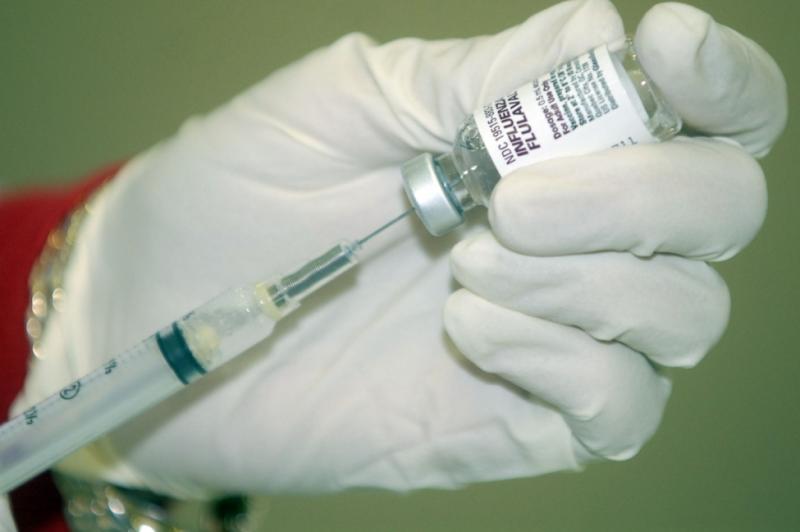
Sept. 18 (UPI) -- Manufacturers have ramped up production of the 2020-21 flu vaccine during the COVID-19 pandemic, with the two viruses expected to overlap this winter, and it still may not be enough to meet demand, experts told UPI.
The manufacturers of flu vaccines approved by U.S. Food and Drug Administration said they expect, collectively, to produce up to 198 million doses for the winter season, according to the Centers for Disease Control and Prevention.
This is a 17% increase over the number of doses produced last year, the agency said.
It is unclear, however, whether even increased production will be sufficient to meet what is expected to be a surge in demand.
"If things are particularly bad [with the flu this winter], we could have a reduced number of doses available, which could mean some people can't get the vaccine," Dr. Tony Moody, associate professor of pediatric infectious diseases and immunology at Duke University Medical Center, told UPI.
In addition, "the pressure to make sure we have early [flu] strain selection and enough time to make the needed vaccine doses all add to the risk that we might have a poor match" for this winter's flu season, Moody added.
In a "normal" year, fewer than half of all Americans typically get the flu shot, though that is expected to change this time.
Earlier this month, Dr. Anthony Fauci, director of the National Institute of Allergy and Infectious Diseases, said that COVID-19 case figures were very high in many parts of the country as flu season approaches. He suggested that treating patients with one or both viruses could overwhelm the nation's health system.
Fauci has urged Americans to get the flu shot this year to reduce the impact of the seasonal virus as the COVID-19 pandemic continues.
The flu vaccine will not protect those who get it from COVID-19, however, said Andrea J. Sant, a professor of microbiology and immunology at the University of Rochester's David H. Smith Center for Vaccine Biology and Immunology.
Several different flu vaccines have been approved by the U.S. Food and Drug Administration. The vast majority -- 99%, according to the CDC -- are quadrivalent, meaning they have four components and contain antigens to protect against four strains of the flu virus.
The strains are chosen by the CDC based on detection by national influenza centers in more than 100 countries during the previous year and data the World Health Organization and other global health organizations.
The composition of flu vaccines for the Northern Hemisphere, which includes the United States, that will be available in 2020-21 was decided in February. World health officials are scheduled to meet this month to determine vaccine make-up for the Southern Hemisphere's next flu season.
The 2019-20 flu vaccines were estimated to be up to 50% effective -- the highest since 2013-14 -- at protecting against the virus strains in circulation in the United States last winter.
Last year's vaccine included antigens against A/Brisbane/02/2018 (H1N1)pdm09, A/Kansas/14/2017 (H3N2), B/Colorado/06/2017 of the B/Victoria lineage and B/Phuket/3073/2013 of the B/Yamagata lineage, according to the FDA.
The vaccine was considered effective against the two widest circulating strains -- it was 50% effective against influenza B/Victoria and 37% effective against influenza A(H1N1)pdm09, CDC reported.
Overall, influenza B strains accounted for nearly 60% of all virus cases in 2019-20, and 98% of those belonged to the B/Victoria lineage, the CDC said.
In the Southern Hemisphere, where winter is concluding, 56% of the flu strains in circulation are influenza A, with the rest influenza B. The most common strains below the equator were influenza A(H1N1)pdm09, influenza A(H3N2) and those from the B-Yamagata and B-Victoria lineages. This year's U.S. vaccine covers strains of all four lineages.
The 2020-21 U.S. flu vaccines will target the A/Guangdong-Maonan/SWL1536/2019 (H1N1) pdm09, A/HongKong/2671/2019 (H3N2), B/Washington/02/2019 of the B/Victoria lineage and B/Phuket/3073/2013-like virus of the B/Yamagata lineage strains.
Higher demand in 2020
Because of the pandemic, the CDC contracted for the production of additional doses in hopes that more people will be vaccinated against the flu this winter.
In July, for example, GlaxoSmithKline, a leading manufacturer of quadrivalent flu vaccines, announced plans to produce 50 million doses of its Flulaval and Fluarix shots, up from 46 million in 2019.
Part of the reason for the vaccine push is that both viruses share many of the same symptoms -- fever, cough, body aches and fatigue, among others -- both Moody and Sant said. This could mean that some people infected with COVID-19 will think they have the flu and not seek medical care.
If they develop these symptoms have being vaccinated against the flu, however, they may be more likely to suspect COVID-19 -- even though the best-performing flu vaccines only reduce the number of flu cases nationwide by 60%, according to the CDC.
And, how effective this year's vaccine will be at preventing people from getting sick remains to be seen, particularly with another, potentially deadly virus in circulation, Moody said.
"There are a number of open questions now, including will we see an attenuated influenza season because people are distancing and wearing masks, or a worse season if people become coinfected [with COVID-19]?" he said.
"We also don't know if there will be any impact on influenza, or if there is, in which direction the impact will occur."